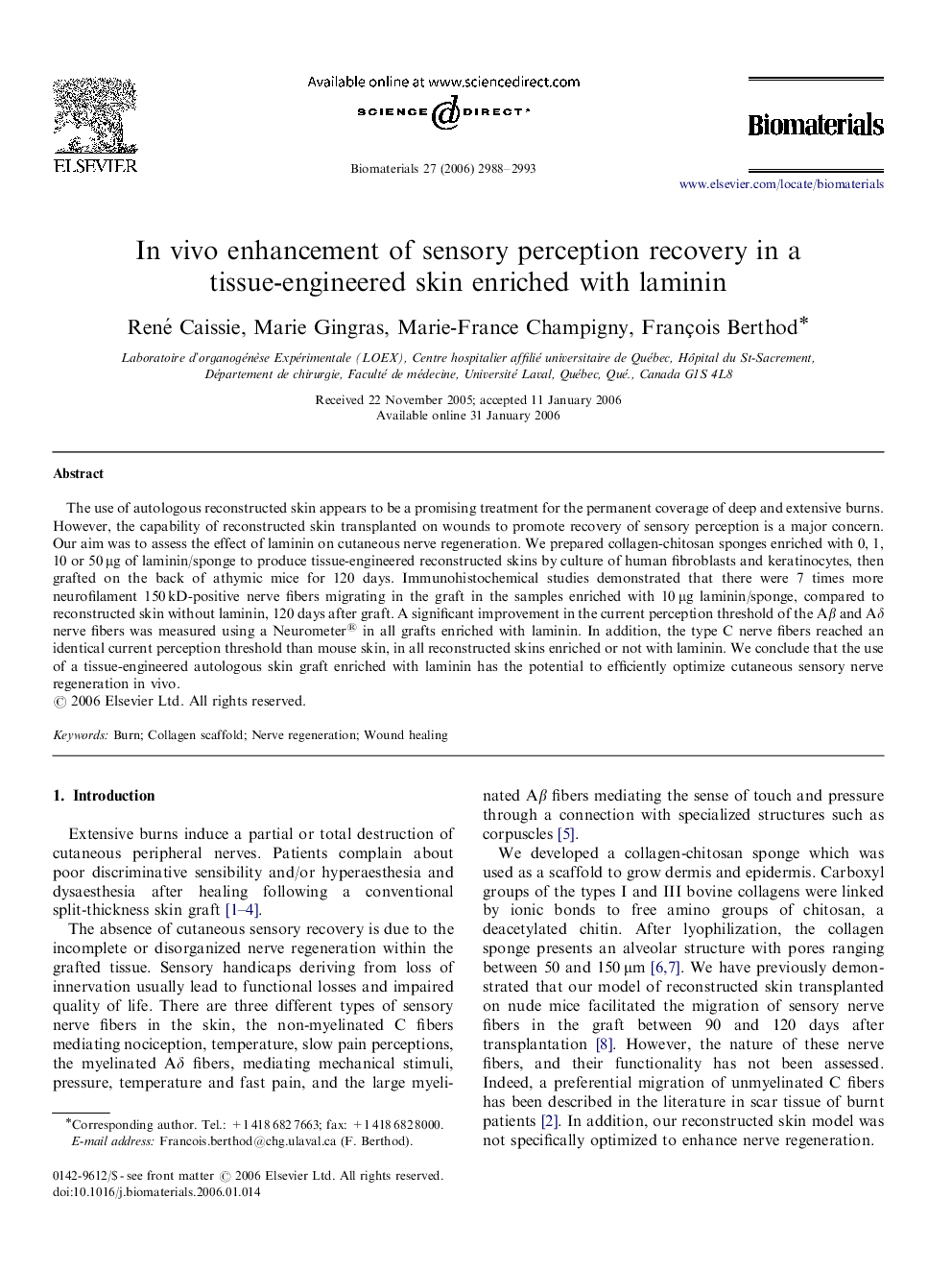| Article ID | Journal | Published Year | Pages | File Type |
|---|---|---|---|---|
| 11738 | Biomaterials | 2006 | 6 Pages |
The use of autologous reconstructed skin appears to be a promising treatment for the permanent coverage of deep and extensive burns. However, the capability of reconstructed skin transplanted on wounds to promote recovery of sensory perception is a major concern. Our aim was to assess the effect of laminin on cutaneous nerve regeneration. We prepared collagen-chitosan sponges enriched with 0, 1, 10 or 50 μg of laminin/sponge to produce tissue-engineered reconstructed skins by culture of human fibroblasts and keratinocytes, then grafted on the back of athymic mice for 120 days. Immunohistochemical studies demonstrated that there were 7 times more neurofilament 150 kD-positive nerve fibers migrating in the graft in the samples enriched with 10 μg laminin/sponge, compared to reconstructed skin without laminin, 120 days after graft. A significant improvement in the current perception threshold of the Aβ and Aδ nerve fibers was measured using a Neurometer® in all grafts enriched with laminin. In addition, the type C nerve fibers reached an identical current perception threshold than mouse skin, in all reconstructed skins enriched or not with laminin. We conclude that the use of a tissue-engineered autologous skin graft enriched with laminin has the potential to efficiently optimize cutaneous sensory nerve regeneration in vivo.
